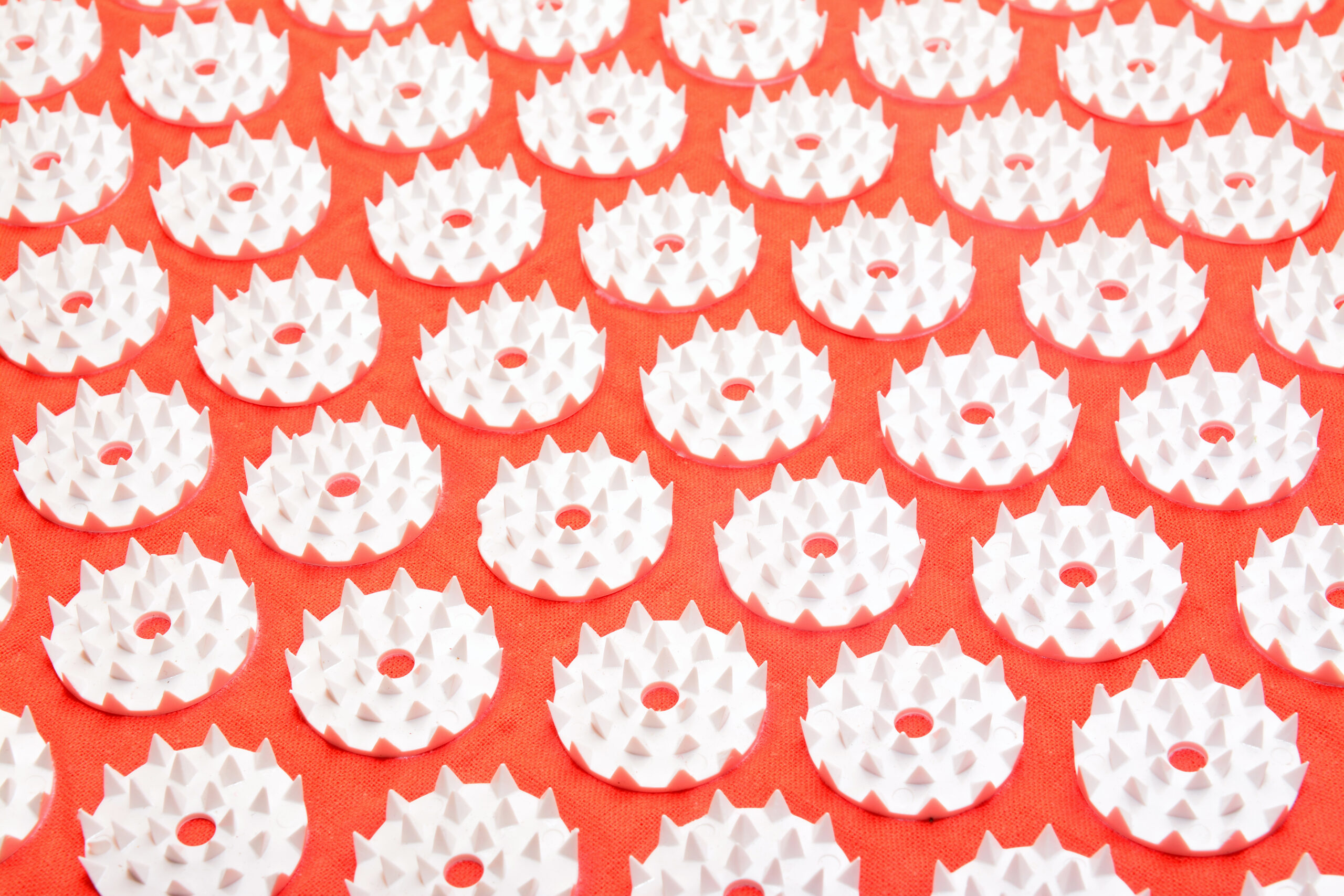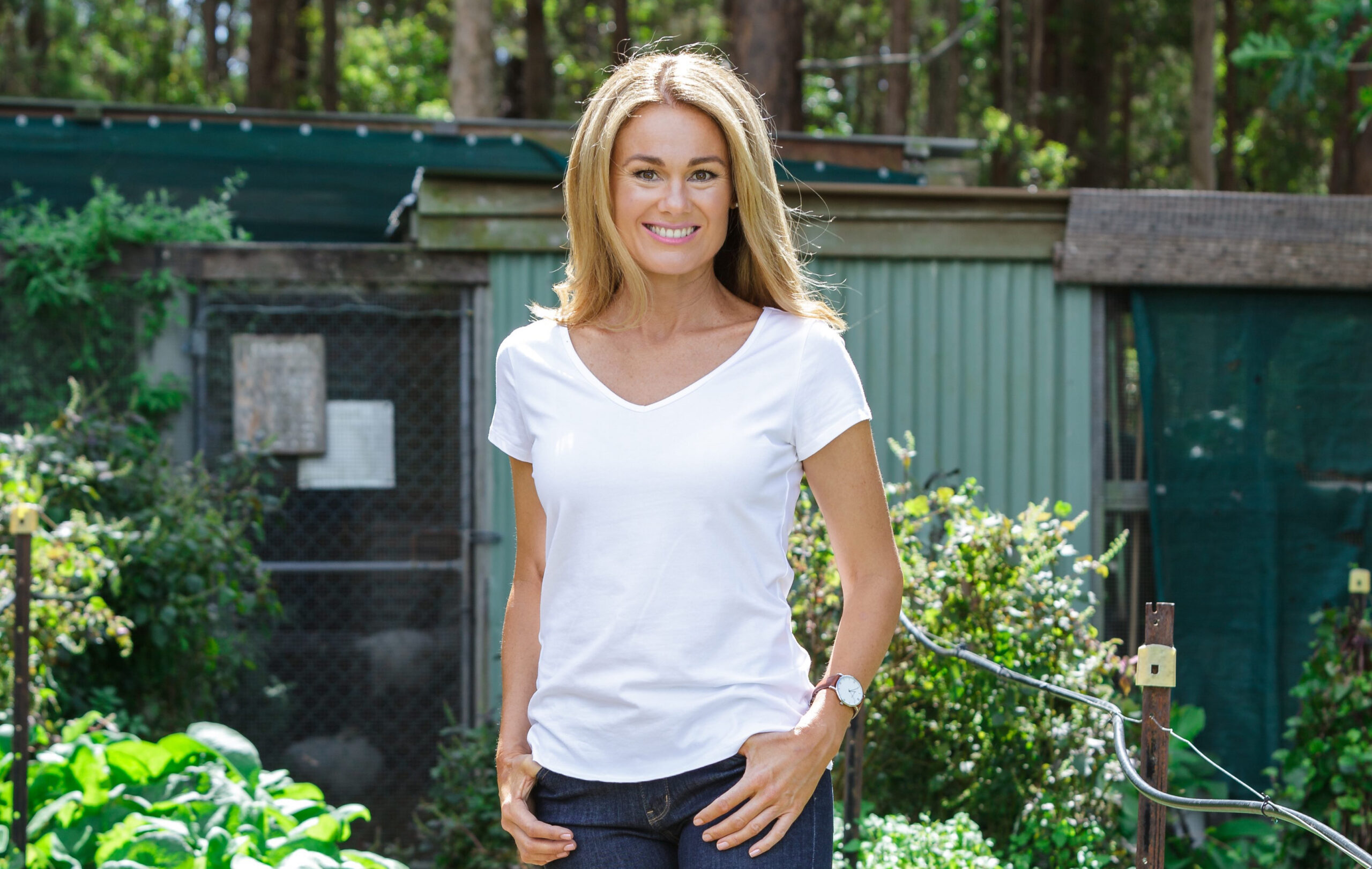It’s a concept that came from ancient Buddhist practices, a version of which became a modern-day health must-have in Sweden several years ago. Now the shakti mat is gaining new fans locally. But what exactly is it? How does it work, and why would we want to lie on a bed of spikes?
Few ancient Buddhist health rituals have fascinated the Western world as much as the bed of nails. If you’ve ever seen the old photos, you’ll remember the fearsomely long metallic points attached to a no-frills wooden board, with some brave soul balanced on top of the spikes. But in this corner of the world, the modern version is the shakti mat.
And it doesn’t even remotely resemble an instrument of torture. Essentially a doormat-sized piece of cotton with a thin foam inner and small plastic spikes, the shakti mat is fast growing in popularity, and fans say they can help with everything from easing pain to reducing insomnia.
The concept is based around acupressure, a 3000-year-old Eastern idea that is thought to stimulate pressure points in the body. As the spikes gently press the skin, this promotes blood flow to the area, which can ease muscle pain and boost relaxation.

In modern-day New Zealand, not too long ago the notion of lying on spikes would have been seen as slightly crazy. But as more people are giving it a try, the concept is steadily spreading from the East to the West.
Entrepreneur Jonathan Heslop, who started supplying shakti mats to Australia and New Zealand and who helps to oversee their production in India, says people are becoming increasingly receptive to alternative health.
“People are more open-minded about different forms of healing,” he says.
“We’ve seen the demand for shakti mats really take off in the past 18 months. Before that, another classic example is acupuncture. Not that long ago it was seen as almost ‘voodoo’, and now it’s widely used.”
When it came to introducing Aussies and Kiwis to shakti mats, part of the challenge was changing some ingrained ideas about Eastern healing.
“The traditional nail beds are still used in India, but there’s a misconception about them in the West,” Jonathan explains. “People think it’s a pain tolerance thing, but they are actually used for relaxation and enhancing meditation.”

So does it work? And most importantly, does it hurt? While beginners find it can sting initially, Jonathan says the best advice is to stick with it.
“Lie down on it every night for a week, and do it for 20 minutes. Everyone I have spoken to has had a similar first reaction to it, you lie there and think ‘I don’t get it, I don’t get it’, then you go, ‘wow’!”
When it comes to the hard evidence that lying on spikes benefits health, scientific studies are in their early days. A 2011 study from Sweden’s Institute of Psychophysiological Behavioural Medicine noted lying on a shakti mat for 20 minutes reduced heart rate and blood pressure.
Researchers saw an effect in both the sympathetic and parasympathetic nervous systems, and study participants reported increased relaxation.
Similar findings came from an earlier Russian research paper presented at the International Symposium on Integrative Medicine. In a study where 125 people were asked to lie on a shakti mat every day for two weeks, 94 per cent of the participants reported improved sleep, 98 per cent found it helped with pain relief, and 81 per cent had increased energy levels.
According to the anecdotal evidence, shakti converts say the mats are especially effective for back aches, and a useful tool for easing stress.
“They’re quite popular with athletes, and as we’re all stressed these days, they can really help with relaxation. Using the mats is also a good way to take time out, away from your phone or computer screen” says Jonathan.
What we thought about it
“I’m always open to trying new things that promise a sense of greater relaxation and improved sleep so I had no hesitations about hopping on to a shakti mat to see what it had to offer. I began by lying with it under my back and shoulders and felt an initial sting as the spikes pressed into my bare skin. I’m not going to lie, it hurt to begin with but after a minute of two I started to feel a warmth across my back that overrided the discomfort.

Then that same feeling of warmth felt like it was travelling throughout my body, almost like a tingling feeling right through to my hands and feet. I felt myself really unwinding and because there’s nothing much else you can do when you’re on a shakti mat but lie very still it was quite a nice chance to just be peaceful and reflect on the day. Because you’re feeling so physically relaxed it’s almost impossible to stew on anything or feel stressed while you do so – so I’d definitely recommend using it after a hard day in the office! While it’s advised to do this for 20 minutes I started off just doing it for 10 and then buidling up each time.
Next I tried standing on the mat and this proved to be a lot harder! The pain is much more intense. Not only are the soles of the feet quite sensitive but you also have all your body weight pressing down on a much smaller area. I lasted three minutes in this position before jumping off again and I had to really concentrate on my breathing during that time to cope with it. I’m definitely going to try again though and see if I can make it to the recommended 10.
I know people swear by shakti mats for soothing back ache and it’s definitely a great way to feel like you’ve had a massage without having to pay lots of money – or leave your living room floor.”
– Nicky, Editor
Top tips for shakti mat beginners
They can take a bit of getting used to, but fans of the shakti mat say it’s easy to learn to love the spikes:
» It will feel a bit weird at first, but stick with it to see the results.
» Lay the mat on a soft surface, like a bed, and practise lying on it for 20 minutes. At first, you may feel tempted to get up soon after lying down, but try setting a timer for 20 minutes and don’t move
until it goes off!
» Consistency helps – try it every day for a week to feel the effects faster.
» Feeling the sting? Wearing a light shirt for the first few times helps to lessen the feeling of the spikes while you get used to it.
» Start by lying down on the mat, before progressing to other methods like rolling it up under your neck or standing upright on the spikes.
» The original mat is best for most people, but there is also a light version that is better for the elderly, or an advanced version for shakti mat pros.

Shakti down under
When best mates Jonathon Heslop and George Lill took a break to go island hopping in Thailand, they never imagined they would come home with a business idea.
In a chance meeting on the beach, they saw a man lying on a mat of spikes and stopped to ask what he was doing. The pair gave it a try, and after getting back to New Zealand, they realised the mats weren’t available in this part of the world.
With Jonathan in the middle of a law degree and both friends keen to try starting a business before heading into corporate life, they set about bringing the mats down under.
“The man at the beach put us in touch with Om Mokshananda, the creator of shakti mats,” says Jonathan. “He’s very spiritual and lives as a monk, and we visited him in India. He’s actually Swedish, and had made the mats popular in Scandinavia.”
From there, the pair helped to establish a workshop in Varanasi, northern India, where the mats are made. The factory only employs women, as that means the benefits of a good wage are more likely flow on to whole families.
Back home, the business started off slowly.
“We are self-taught business people and we ended up doing everything the hard way. We sold the mats from the car boot, and were driving around to yoga studios and gyms.”
Momentum gradually built and these days, the guys have family members employed at their head office, where they like to down tools each afternoon for ‘Tai Chi at 3’. It’s been a learning curve for the young pair, who say they started out not only clueless about entrepreneurship, but also slightly sceptical of alternative health.
“When I first called up my dad and asked him for a loan to help me buy 2000 nail beds, there was a pretty long silence,” laughs Jonathan.


